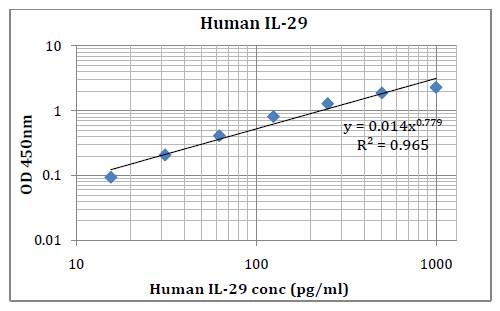Human FGF21 Recombinant Protein (His Tag)(Discontinued)
Shipping Info:
For estimated delivery dates, please contact us at [email protected]
| Amount : | 50 µg |
| Purification : | > 95 % as determined by SDS-PAGE |
| Content : | Formulation Lyophilized from 50 mM Tris, 10 % glycerol, 0.05 % Brij 35, pH 8.0 Normally 5 % - 8 % trehalose, mannitol and 0.01% Tween80 are added as protectants before lyophilization. |
| Storage condition : | Store it under sterile conditions at -20°C to -80°C. It is recommended that the protein be aliquoted for optimal storage. Avoid repeated freeze-thaw cycles. |
| AA sequence : | His29-Ser209 |
| Alternative Name : | UNQ3115 / PRO10196 Protein, |
Source : E. coli
Fibroblast growth factor 21 (FGF21) is a member of the fibroblast growth factor (FGF) family. FGF family members possess broad mitogenic and cell survival activities and are involved in a variety of biological processes including embryonic development, cell growth, morphogenesis, tissue repair, tumor growth and invasion. FGF-21 has a hydrophobic amino terminus, which is a typical signal sequence, and appears to be a secreted protein. The metabolic regulator fibroblast growth factor 21 (FGF21) has antidiabetic properties in animal models of diabetes and obesity. FGF21 is a novel adipokine associated with obesity-related metabolic complications in humans. The paradoxical increase of serum FGF21 in obese individuals, which may be explained by a compensatory response or resistance to FGF21, warrants further investigation. FGF-21, which we have identified as a novel metabolic factor, exhibits the therapeutic characteristics necessary for an effective treatment of diabetes.
Fibroblast growth factor 21 (FGF21) is a member of the fibroblast growth factor (FGF) family. FGF family members possess broad mitogenic and cell survival activities and are involved in a variety of biological processes including embryonic development, cell growth, morphogenesis, tissue repair, tumor growth and invasion. FGF-21 has a hydrophobic amino terminus, which is a typical signal sequence, and appears to be a secreted protein. The metabolic regulator fibroblast growth factor 21 (FGF21) has antidiabetic properties in animal models of diabetes and obesity. FGF21 is a novel adipokine associated with obesity-related metabolic complications in humans. The paradoxical increase of serum FGF21 in obese individuals, which may be explained by a compensatory response or resistance to FGF21, warrants further investigation. FGF-21, which we have identified as a novel metabolic factor, exhibits the therapeutic characteristics necessary for an effective treatment of diabetes.
Measured in a cell proliferation assay using NIH-3T3 mouse embryonic fibroblast cells. The ED50 for this effect is typically 0.1Â1 µg/mL in the presence of 2.5 µg/mL of rmKlotho beta.
Other pack size also available.
For Research Use Only. Not for use in diagnostic/therapeutics procedures.
|
There are currently no product reviews
|
























.png)








